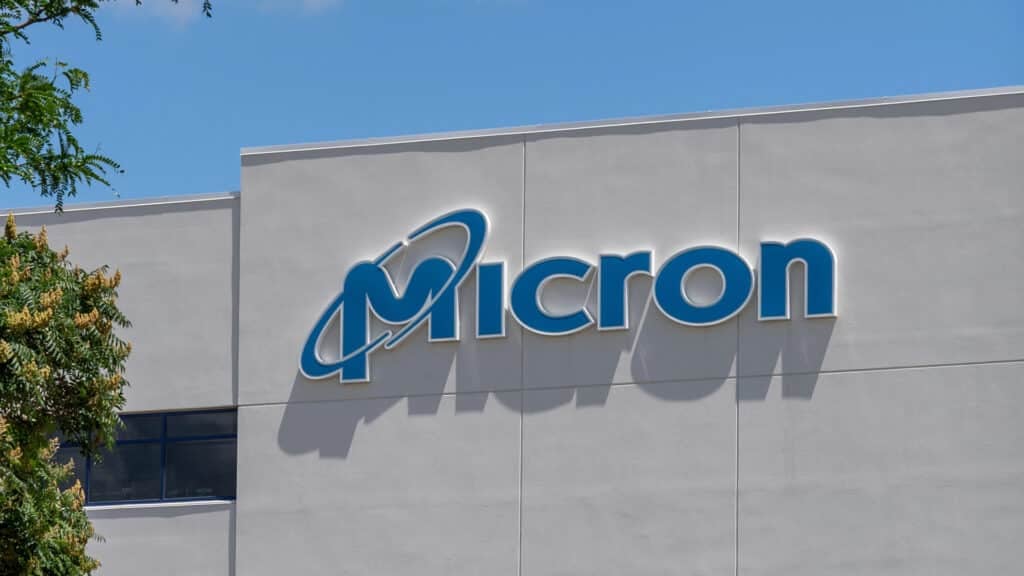Introduction
2024 has arrived and as the new year begins, it provides an opportune time to pause, examine the data storage market, and contemplate what it has in store for the year ahead. Although it is impossible to perfectly predict the future, I believe 2023 laid the groundwork for several trends that are likely to be seen within the data storage market in 2024. The following represents key data storage trends that I predict to see in 2024.
AI
To start off with the low-hanging fruit, AI is almost guaranteed to be a trending topic in the new year. AI was all the rage in 2023, and there is no reason to think that the AI hype train will be stopping anytime soon. The impact of AI will likely be a large trend for a wide breadth of industries and technology segments, and data storage is no exception. The emergence of AI has a dual impact on data storage. The first involving the data storage needs of new AI applications, and the second involving how AI technology can be integrated into the storage solutions themselves.
In the first scenario, we have already seen in 2023 that many vendors are positioning their solutions as “storage for AI,” and I am expecting this trend to continue. There will be a strong push, especially for unstructured data solutions (more on this later) to become established as a leading platform for AI data infrastructure. While initially AI deployments have been focused in the cloud, I expect to see additional usage of on-premises infrastructure become prevalent as well. The increase in on-premises AI deployments will be driven by several factors including data privacy concerns, economic factors, and additional focus from infrastructure vendors to provide solutions fit for AI deployments. The storage requirements for AI deployments will include a combination of scalability and performance for unstructured storage, as well as continued adoption for acceleration technologies such as GPUDirect.
The second impact of AI on data storage that I believe will be seen in 2024 is leveraging AI technology to enhance data storage, data management, and data security solutions. The emergence of AI technology and the continued development in the space can eventually lead to integrating the technology into data infrastructure solutions to provide enhanced capabilities and advanced features. Possible examples of this include AI-powered infrastructure management (AI ops), AI-powered security and ransomware detection functionality, and AI-powered data management functionalities such as automated meta-data tagging or intelligent data lifecycle management. As AI development continues over the next year, I expect to see more of these AI-powered capabilities being added to data storage solutions from vendors trying to differentiate their offerings in the market.
ESG and Sustainability
Another trend that has been growing over the past few years, and that I expect to continue throughout 2024, is the relationship between data storage and sustainability. On the vendor side, IT vendors are making an effort to provide ESG reports and sustainability metrics for both themselves as a company and for their products. Over the past year, IT vendors have increasingly included sustainability metrics, particularly energy usage, as a key component in marketing materials and sales tools, and I expect to see more of this in the coming year.
For IT organizations, the focus on sustainability will vary based on organization’s individual sustainability goals as well as regional regulations. IT sustainability requirements have been a significant consideration in Europe for some time, and while the regulatory requirements are not the same in the US, sustainability in the data center has been a growing concern. For many IT organizations in Europe, the requirements of increasing capacity and maintaining performance requirements must now be balanced with energy constraints, which in some cases, is a hard cap on total energy consumption. As organizations begin to refresh IT infrastructure under new energy requirements, they will need to leverage technologies that can help improve energy efficiency and sustainability, including denser QLC drives, data management solutions, and leveraging the public cloud.
Device Trends: QLC SSDs and the Death of Disk?
2023 brought increasingly dense QLC flash devices, such as Pure Storage’s 75 TB Direct Flash Modules, and several vendors releasing new QLC based systems, such as NetApp’s introduction of its C series systems. This trend of increasingly dense SSDs and leveraging them for dense, capacity-oriented systems is one that is likely to continue into 2024 and beyond. Pure has already stated plans to continue creating increasingly dense devices with a goal of achieving a 300 TB SSD by 2026. While I do not anticipate the company being 2 full years ahead of schedule, I do anticipate increasingly dense drives to be developed along the way—both by Pure and other vendors with similarly ambitious density goals.
The usage of these dense QLC drives is driven by several factors. The obvious reason being that organizations are challenged with storing increasingly large capacities of data, and they need economic ways to do so. QLC-based systems provide economic density while providing the performance of a solid-state device. An additional consideration is sustainability (see earlier). For organizations challenged with storing increasing capacity, without using significantly more energy, these increasingly dense QLC drives become an alluring solution.
The advancement in QLC development and adoption throughout 2023, and likely to continue throughout 2024 as well, brings up a reoccurring argument around the Death of Disk. As denser and denser SSDs are developed, the economics of flash increasingly challenge those of HDDs. When considering the sustainability and reliability advantages of SSDs, many—including some all-flash oriented vendors—like to proclaim the imminent death of HDDs. This argument has been around for a while, and the advancements of QLC give it more credibility, but to make a not very bold prediction—HDDs probably will not die completely in 2024. QLC devices are likely to gain more momentum, but for certain applications, such as particularly write-heavy workloads, HDDs may still hold an advantage.
Block Storage
I do not expect 2024 to be a year of radical change for block storage. The block storage market is fairly mature with many established products from large, reputable vendors. With a number of mature, fully featured products available, the major purchasing considerations for block storage typically become driven by cost and in some cases specific performance requirements.
While I do not expect major changes to most block storage products, many will likely continue to receive periodic feature updates. Specifically, additional cybersecurity features to further combat ransomware and other cyberattacks are a likely candidate to be added, as it is a high priority area for many organizations, with continually evolving requirements and best practices.
Unstructured Storage
While I do not anticipate significant trends emerging in the block storage market, the unstructured storage market is undergoing a bit of a transformation. Unstructured data, file and object storage, has often been utilized as secondary storage and content repositories. While some NAS systems have prioritized performance and primary storage workloads, this shift is newer to object storage within the past few years.
The newer trend, which will certainly continue into 2024, is combined file and object solutions for use as primary storage, cloud native applications, and AI. These solutions are typically software defined, container native, and support QLC flash. VAST Data is one example that has proven quite successful with such a solution, and 2023 introduced new solutions along a similar mold including Quantum Myriad and DDN Infinia. These solutions target unstructured data workloads that require both high levels of scalability and performance. While NAS and object storage systems will certainly continue to serve the more traditional secondary storage use cases, the emergence of AI and use of unstructured data as primary storage will likely lead to a continuation of this flexible, high-performance unstructured data trend.
Final Thoughts
The beginning of the year presents a great opportunity to list the trends that I expect to see in 2024, but only time can tell how the data storage market will actually unfold in the new year. The trends witnessed in 2023 help provide insight into what is likely to be in store, but as is often the case with technology, new developments can quickly cause trends to shift.
Disclosure: The Futurum Group is a research and advisory firm that engages or has engaged in research, analysis, and advisory services with many technology companies, including those mentioned in this article. The author does not hold any equity positions with any company mentioned in this article.
Analysis and opinions expressed herein are specific to the analyst individually and data and other information that might have been provided for validation, not those of The Futurum Group as a whole.
Other Insights from The Futurum Group:
UltiHash Raises $2.5 in Pre-Seed Funding
IBM Boosts Ceph with 7.0 Release
Author Information
Mitch comes to The Futurum Group through the acquisition of the Evaluator Group and is focused on the fast-paced and rapidly evolving areas of cloud computing and data storage. Mitch joined Evaluator Group in 2019 as a Research Associate covering numerous storage technologies and emerging IT trends.
With a passion for all things tech, Mitch brings deep technical knowledge and insight to The Futurum Group’s research by highlighting the latest in data center and information management solutions. Mitch’s coverage has spanned topics including primary and secondary storage, private and public clouds, networking fabrics, and more. With ever changing data technologies and rapidly emerging trends in today’s digital world, Mitch provides valuable insights into the IT landscape for enterprises, IT professionals, and technology enthusiasts alike.





